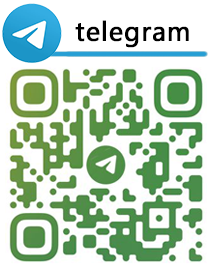linux clone boot drive | create bootable hard drive clone linux clone boot drive GNOME Disks is a program available on any Linux Distribution that has a myriad of uses. It is primarily used to format hard drives, wipe them of their data, and create or modify the partitions on a drive. However, it also allows you to convert the entirety of a drive to . See more Seamaster - Diver 300M. Choose a true watchmaking icon with the Seamaster .
0 · making a cloned drive bootable
1 · free boot drive clone tool
2 · create bootable hard drive clone
3 · clone bootable drive windows 10
4 · clone boot drive windows 11
5 · clone boot drive to larger
6 · bootable drive cloning software
7 · boot drive clone windows 10
This 1930 timeline shows you some of the biggest events of 1930, giving an overview of the history of the year. 1930 was the year that the first football World Cup took place, Mickey Mouse made his first appearance in comic form, and Pluto was officially discovered and named as a planet.
Many modern backup tools will save the contents of your hard drive to the cloud or clone your hard drive to another hard drive. While these are both useful and completely valid options, they aren’t very flexible. If you decide you don’t want your data saved in the specific cloud server you chose, then you have . See moreGNOME Disks is a program available on any Linux Distribution that has a myriad of uses. It is primarily used to format hard drives, wipe them of their data, and create or modify the partitions on a drive. However, it also allows you to convert the entirety of a drive to . See moreUnlike the rest of the tools in this list, Clonezilla isn’t one you install on your computer. Instead, it runs off of a USB drive and lets you boot into it to clone your hard drive. For . See morePartimageis a terminal program with an easy-to-use text-based user interface that can quickly clone your drive to an image file. Where . See more
Lastly, we have dd, a built-in Linux command that will already be available to you in basically every Linux distribution. ddis a very powerful tool and can have some very drastic consequences if you’re not careful. It is very easy to accidentally overwrite a hard . See more
Backing up your hard drive is easy. Here are a few ways to clone your entire hard drive in Linux, allowing you to back up your data with ease. Here are the top five solutions to clone a Linux hard disk drive: dd. Partimage. Partclone. Clonezilla. balenaEtcher. Some might come preinstalled with your Linux distro. Other Linux clone disk tools might be available to install from a third-party source. Either way, it shouldn't be long before you're able to get your system back up and running.
rolex gebraucht kaufen erfahrungen
1) Installed Ubuntu Synaptic Package Manager - successful. 2) Installed Clonezilla via SPM - successful. 3) After installing Clonezilla on internal hard drive, it appears that Clonezilla must be downloaded and burned to a DVD. 4) Used Disks app to format USB external disk as Linux ext4 bootable.
But the easiest one is to just copy all files from the old drive to the new one. Create an ext4 partition and a swap partition on the new drive. Boot from LiveUSB. Mount the old Ubuntu partition to some directory, mount the new one to some other directory. Cloning your hard drive to create bootable disk images is one of the most crucial things you can do to protect your data. In this step-by-step guide, I’ll teach you how to efficiently clone drives on Linux using the excellent tools in your distro’s toolbox—like the venerable dd, the versatile Partimage, and the essential Clonezilla live CD. Overview. As Linux users, we might want to clone or move our Linux installation from one device to another as it enables us to use an already configured setup on new hardware. It also means that we can bypass the hassle of configuring a new system from scratch.
Cloning an entire boot or data drive with dd is one of the most common and useful operations for system duplication and backup. Let‘s walk through a real world example with some best practices. For this demo, I have an Ubuntu 18.04 desktop with two drives:
Disk cloning is the process of making an image of a partition or of an entire hard drive. This can be useful for copying the drive to other computers or for backup and recovery purposes. Another way to clone a drive is to create a disk image that you can move around and restore as you would do with a bootable USB. Creating image files allows you to save multiple backups to a single destination, such as a large portable hard drive.sudo chroot . Run grub-install from inside the chroot: apt install grub-efi-amd64-bin # skip if using MBR mode. grub-install /dev/ # use the whole drive (e.g. sda, not sda1) Backing up your hard drive is easy. Here are a few ways to clone your entire hard drive in Linux, allowing you to back up your data with ease.
Here are the top five solutions to clone a Linux hard disk drive: dd. Partimage. Partclone. Clonezilla. balenaEtcher. Some might come preinstalled with your Linux distro. Other Linux clone disk tools might be available to install from a third-party source. Either way, it shouldn't be long before you're able to get your system back up and running. 1) Installed Ubuntu Synaptic Package Manager - successful. 2) Installed Clonezilla via SPM - successful. 3) After installing Clonezilla on internal hard drive, it appears that Clonezilla must be downloaded and burned to a DVD. 4) Used Disks app to format USB external disk as Linux ext4 bootable.
But the easiest one is to just copy all files from the old drive to the new one. Create an ext4 partition and a swap partition on the new drive. Boot from LiveUSB. Mount the old Ubuntu partition to some directory, mount the new one to some other directory. Cloning your hard drive to create bootable disk images is one of the most crucial things you can do to protect your data. In this step-by-step guide, I’ll teach you how to efficiently clone drives on Linux using the excellent tools in your distro’s toolbox—like the venerable dd, the versatile Partimage, and the essential Clonezilla live CD. Overview. As Linux users, we might want to clone or move our Linux installation from one device to another as it enables us to use an already configured setup on new hardware. It also means that we can bypass the hassle of configuring a new system from scratch. Cloning an entire boot or data drive with dd is one of the most common and useful operations for system duplication and backup. Let‘s walk through a real world example with some best practices. For this demo, I have an Ubuntu 18.04 desktop with two drives:
Disk cloning is the process of making an image of a partition or of an entire hard drive. This can be useful for copying the drive to other computers or for backup and recovery purposes. Another way to clone a drive is to create a disk image that you can move around and restore as you would do with a bootable USB. Creating image files allows you to save multiple backups to a single destination, such as a large portable hard drive.
rolex gebraucht darmstadt
rolex fälschung werk datumswechsel

making a cloned drive bootable
16 minutes read. 4 or 5 Days Malta Itinerary. You’re planning to spend 4 or 5 days in Malta for your next holidays? Great! In order to help you plan your stay, I have prepared a detailed itinerary to visit Malta in 4-5 days and see all the must see attractions of this little Mediterranean island.
linux clone boot drive|create bootable hard drive clone




























